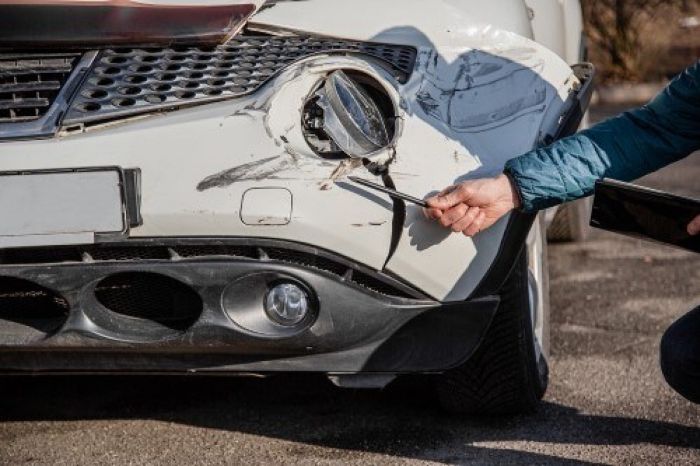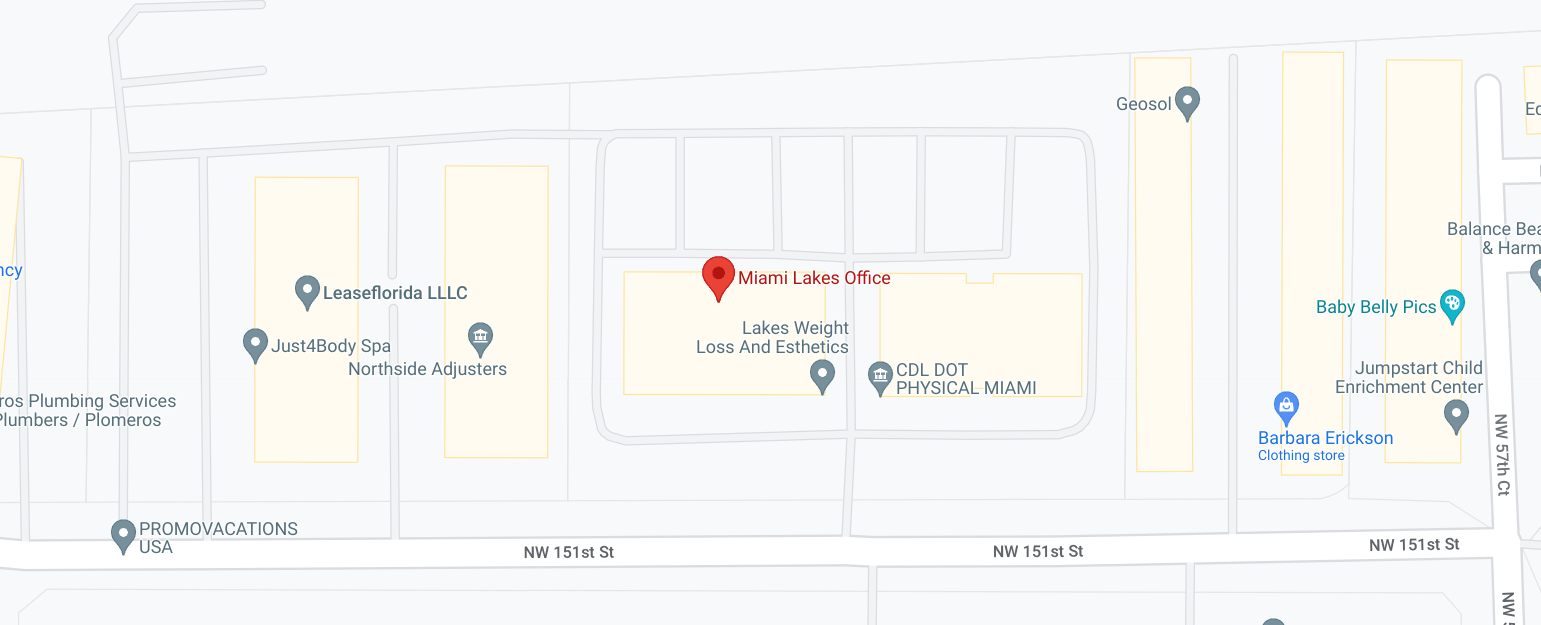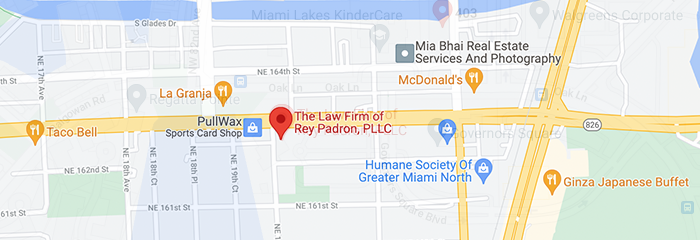Determining fault is one of the main challenges involved following a car accident. Drivers in Florida should understand how to determine fault and its impact on their car accident claims. Specifically, understanding how comparative fault works can help you navigate car accident claims successfully and ensure you receive maximum compensation for injuries and damages. This guide provides an in-depth look at determining comparative fault in an accident.
What is Comparative Fault?
Comparative fault, also known as comparative negligence, is a legal term used to determine who is at fault in a car accident.
So, why is it important to determine or assign fault? It’s because whoever is at fault will be responsible for paying for the injuries and damages resulting from the car collision.
In determining comparative fault, all parties involved in a car accident are assigned a degree or percentage of the fault they contributed to the accident. That degree determines how much they have to pay through their insurance provider to the victims, whether for injuries (such as medical bills) or car damage.
Depending on your state, several rules govern how fault is determined and how much compensation is assigned to the corresponding parties.
How Does Florida Law Address Fault in a Car Accident?
For Florida drivers, it is essential to know the state’s laws when determining fault in a car accident. This is especially crucial since Florida has shifted from the pure comparative fault system to a modified comparative fault system. Various legal nuances are involved here, so it’s essential to work with a Miami car accident lawyer who can easily navigate these legal terms.
In the pure old comparative fault system in Florida, a plaintiff who is 99% at fault for a car accident is eligible to seek 1% compensation for damages.
However, this has since been modified. Under the new system, the plaintiff cannot recover compensation for damages if they are determined to be at fault by 51% or more. It means you cannot ask for compensation even if you’ve been injured, if you were the driver at fault.
On the other hand, a driver who’s at fault by 50% or lower can still seek compensation for damages. The only difference is that the total amount they can recover varies based on the degree of their fault in the car accident.
For example, if you seek compensation of $100,000 for your injuries. But based on the comparative fault system, you are 30% at fault for the accident. It means you will get 30% less of your expected compensation for the damages, equivalent to $30,000. The maximum compensation you can get from your insurance claim would be $70,000, instead of $100,000.

Modified Comparative Fault System and Its Implications for Florida Drivers
Florida’s modified comparative fault system impacts how drivers can negotiate the settlement for their car insurance claims. Insurance companies can use the comparative fault system to minimize payouts for car accidents. Therefore, a higher percentage of fault for a driver would be good news for the insurance companies because they can reduce payouts.
As a driver, you must counteract any effort to minimize payouts and demonstrate a lack of fault. It will help ease the blame on your end for the accident and reduce the percentage of the insurance payout lost.
How is Comparative Fault Determined?
Determining comparative fault is crucial because it will ultimately decide how much you should pay the other parties and if you can pursue payouts for your own damages.
Determining fault involves assessing all factors and parties involved in a car accident. The first step is to investigate the accident by gathering information, incident reports, eyewitness accounts, and physical evidence.
Gathering evidence and statements creates a detailed account of what happened in the car accident. Knowing the sequence of events will help identify who is at fault, whether based on a traffic violation or a driver’s negligent behavior.
Car accident investigations can vary in length, with some lasting several months. They vary based on the complexity of the case and the nature of the car accident. For example, in multiple-car collisions it can take longer to determine fault due to the number of vehicles involved.
The fault will be assigned based on the evidence and the assessment of the report. Each party will be assigned a percentage based on their share of the contribution to the accident. If there are two parties involved, one driver can be assigned 80% of the fault, and the other 20%.
Here is an overview of the factors that experts analyze to determine fault:
1. Police Reports
When involved in a car accident, you must alert the police about the incident. Why is it necessary? A police report is a crucial document for determining fault based on law enforcement’s assessment of the site and for validating case details, which insurance providers use to determine fault and payout.
2. Traffic Laws
Law enforcement uses traffic laws to determine if a particular driver has violated those laws, which may have resulted in the accident. Speeding or failure to yield to a red light could make a driver at fault.
3. CCTV Footage
Video evidence is a powerful tool that investigators use to determine fault in a car accident in Florida. It could be dash cam footage or CCTV recording. The video provides an indisputable view of how the accident occurred and who was at fault.
4. Eyewitness Testimonies
Eyewitness accounts can also support the theory about who was at fault. Their insights are critical in supporting the outcome of the car accident case, as these people have no vested interest in the outcome of the case.
5. Accident Reconstruction
For cases with little to no evidence, accident reconstruction experts can help recreate the accident. They will analyze vehicle damage, skid marks, and other physical evidence to determine which driver was most at fault in an accident.
Common Factors that Help Determine Fault
Several factors contribute to determining fault in a car accident scenario in Florida.
- Driver Behavior—A driver’s behavior is one of the main contributors to fault in a car accident. It is also one of the strongest factors that affect how comparative fault is determined in Florida. Distracted driving is an example of driver behavior that can increase the chances of a car accident. If a Florida driver engages in distracted driving behavior, such as using a phone while driving, it could increase the degree of fault.
- Dismissing Traffic Signs—Failure to obey traffic signs and rules is another common cause of fault in car accidents in Florida. Speeding is another common issue among drivers in Florida. It occurs when drivers exceed the recommended speed limit within an area, which can severely limit a driver’s reaction time and increase the chances of more serious collisions.
- Type of Collision—Investigators will examine the nature of the car collision, as it can help determine who is at fault. For example, in rear-end collisions most of the blame is assigned to the rear driver. However, the actions of the lead driver will be analyzed. If it were determined that the rear-end collision occurred due to the lead driver’s sudden braking action, they would still be assigned fault in a car accident.
No matter what factors contribute to your case, it’s vital to have a car accident lawyer in Miami to advise you on the best legal actions to take.

How Do Comparative Fault Laws in Florida Affect Your Case?
Due to Florida’s modified comparative fault law, at-fault drivers are more inclined to defend their case. They are incentivized to maximize recovery from injuries and damages that they sustained, even if they are at fault, as long as it is below 50%.
It becomes increasingly crucial for Florida drivers to work with an experienced car accident lawyer in Miami to ensure they can overcome common defence tactics.
In the past, determining fault in a car accident was used to determine the compensation a victim receives for the accident. However, the new legal system in Florida governing car accidents increases the risk that a victim might not receive compensation or may receive less than they deserve if the at-fault driver successfully defends their case. Now, drivers are less inclined to settle and more willing to fight for higher compensation.
One common defense that at-fault drivers and insurers make is that the injuries were pre-existing. Therefore, you should work with an experienced car accident lawyer to prove that the injuries are new and sustained as a result of the impact from the car collision. This would require a medical examination to obtain a report explaining that the injury was a direct result of the car accident or was aggravated by the impact.
In addition, you can use the medical report to prove the severity and seriousness of the injuries. Moreover, you must be able to show how these injuries have affected the quality of your daily life.
You can go back to the factors that courts use to determine fault in a car accident in Florida. Ensure adequate evidence and legal documents to support your case and prove that the other driver is at fault. Moreover, you should never verbally admit fault. Be cautious when making statements, especially to law enforcement, and only speak to them with an attorney present.
Challenges of the Modified Comparative Fault System in Florida
The modified traffic laws in Florida have made it more challenging to deal with car accidents. Whereas it was relatively straightforward before, the new system has many nuances that only legal experts can successfully navigate.
The main challenge of the new system is overcoming the defense strategies of the plaintiff and the insurance provider. These parties will attempt to downplay their fault to reduce payouts and assign blame to another driver. Even minor infractions that you could otherwise miss could significantly impact the investigation, which is why you must carefully evaluate the details of your case to ensure that you are not assigned fault at a higher percentage than it is.
Another challenge with this modified system is the emotional toll on victims. As the at-fault drivers assign blame to others, it can affect the victim’s emotional and mental well-being, especially if they sustained serious injuries and face substantial medical costs. If a victim is emotionally unfit, they would not be able to advocate for their rights as effectively as if they were 100% healthy.
Reasons to Work with a Car Accident Lawyer in Miami
Therefore, working with a Miami car accident lawyer is non-negotiable, given Florida’s complex comparative fault system. It ensures you can confidently approach each car accident insurance claim with knowledge and expertise.
Here are some benefits of working with a Miami car accident lawyer vs. handling the case on your own:
- A car accident lawyer can leverage experts to prove fault and prevent victims from being assigned fault when there is none.
- A legal professional can negotiate your car accident case on your behalf. They can compute a fair compensation that is commensurate with the level of fault of each driver.
- Miami car accident lawyers are familiar with the timelines when working on car accident cases. They ensure that victims can file for car accident claims within the allowed statute of limitations and prevent forfeiture of a victim’s right to pursue compensation for damages.
If you need legal help, you should not hire just any lawyer in Miami, but choose a trusted professional with expertise and experience in handling car accident cases. This guarantees that you have a legal team working with you to develop strategic actions to secure fair compensation and to protect your rights. Furthermore, they can navigate the complex assessment procedure for determining fault, so you can confidently pursue your claim.












